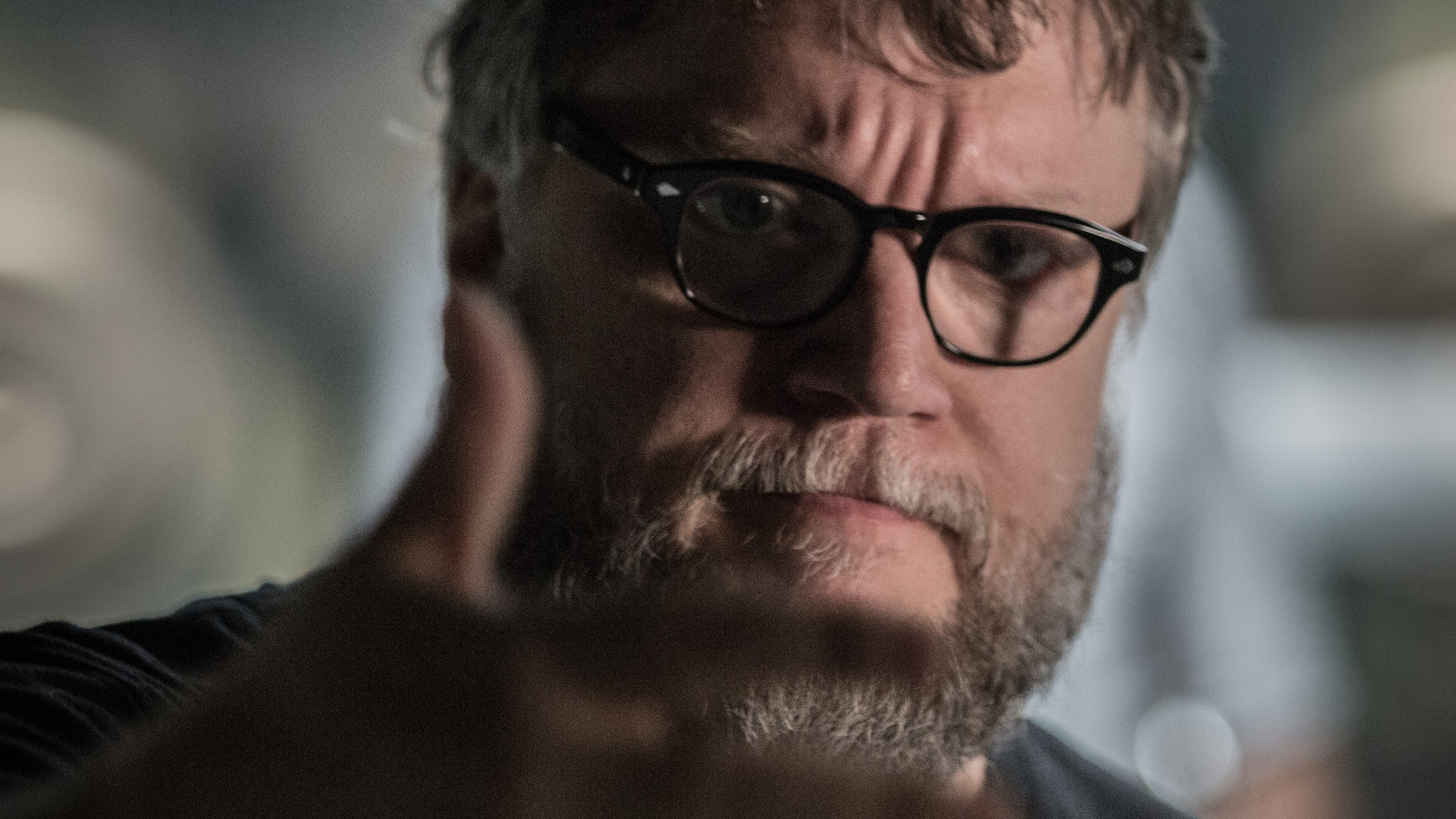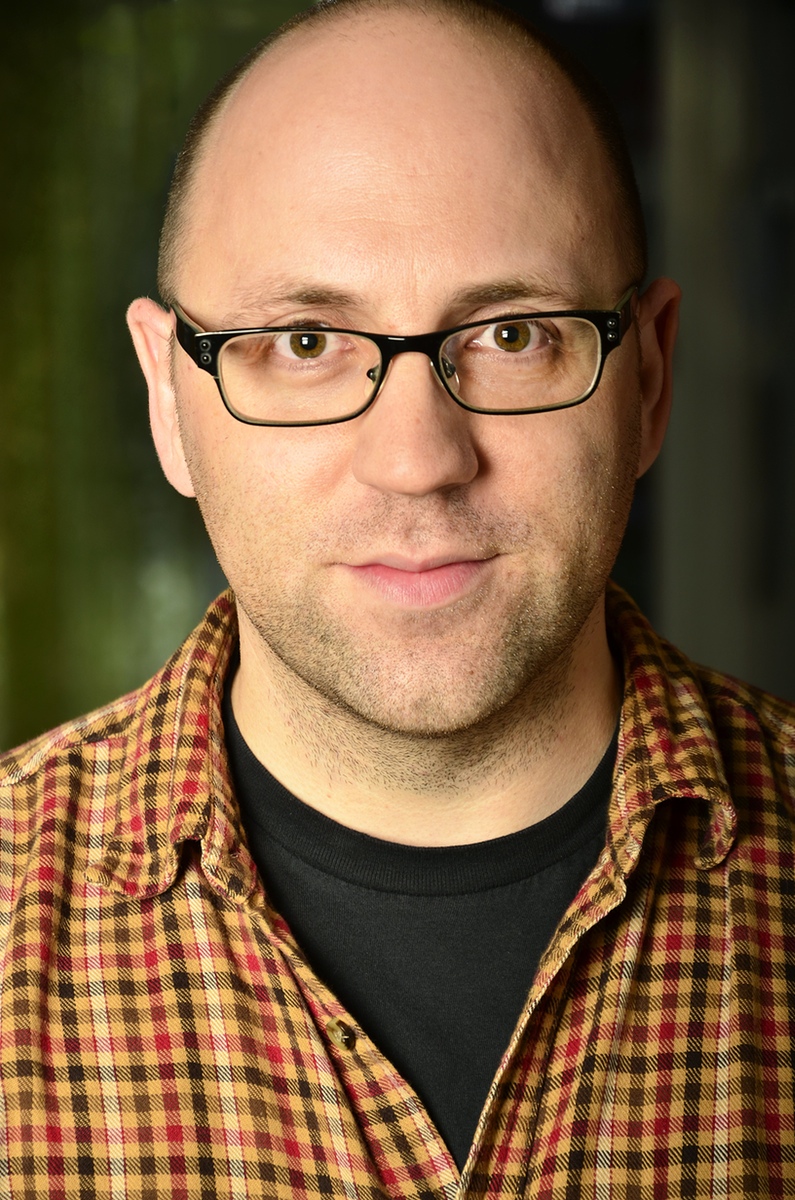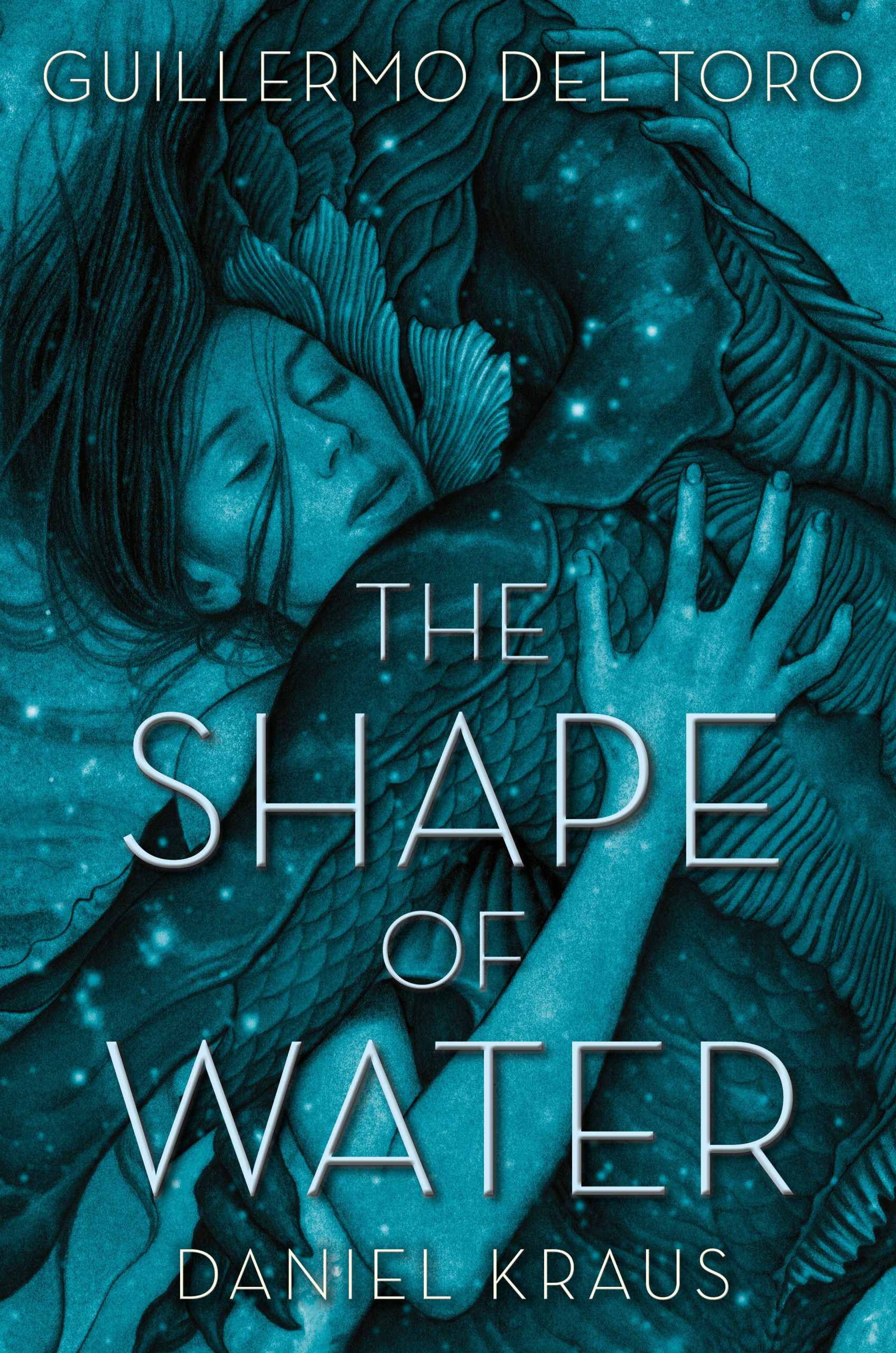Most movie novelizations do little more than write down what audiences see on the screen. But the novel that’s accompanying Guillermo del Toro’s new movie The Shape of Water is no mere adaptation. Co-author Daniel Kraus’ book and the film tell the same story, of a mute woman who falls in love with an imprisoned and equally mute creature, in two very different ways — and we have an exclusive excerpt to show how.
The idea for Guillermo del Toro’s The Shape of Water was born on a tennis court in Iowa. That’s where author Daniel Kraus, at the age of 15, vividly remembers coming up with the seed of a story about a creature locked in a lab and a janitor that tries to break it out.
Kraus carried that idea around with him for years, regularly toying with it but never finishing it, until then he had breakfast with Guillermo del Toro in Toronto, Canada. Kraus, by then a successful author, had been tapped to write a book called Trollhunters with the Pan’s Labyrinth director — and during one meeting about it, Kraus’ idea began its journey to become The Shape of Water in two forms: A movie and an unconventional novel.
“I don’t remember how it came up, exactly, but [del Toro] asked me what I was working on and for some reason I brought up this idea,” Kraus told io9. “I said ‘I’m also tinkering with this notion I’ve had forever about freaks in a lab,’ and he just lit up.”
Kraus, slightly embarrassed he’d shared this childhood secret with the iconic filmmaker, kept trying to drive the conversation back to Trollhunters, but del Toro wouldn’t have it. “I was like, ‘Sorry I brought that up, let’s get back to Trollhunters‘ and he was like, ‘No, no, no, no, no, let’s keep talking about this,’” Kraus continued. “So we started talking about it and he optioned that very simple, basic idea right there. Within minutes of hearing it he was like, ‘This is my next movie.’”

Guillermo del Toro
It wasn’t. Del Toro went off to make Crimson Peak, and Kraus figured that was that. But del Toro’s enthusiasm rekindled Kraus’ interest and he finally began to fully develop the idea as a novel. Little did he know del Toro was simultaneously working on the screenplay . Eventually, the pair decided they both wanted to tell this story in their own ways: del Toro would make his movie and Kraus would write his book.
“None of what he came up with disrupted the things I was planning,” Kraus, who shares author credit with del Toro, said. “So I was still able to do all the things I had been planning and thinking about on my own, and they all kind of snapped perfectly into the plot and story he was envisioning. So I was able to take his story and expand it to work in directions to encapsulate the sort of things I wanted to do with it.”
As both projects were being written, del Toro and Kraus would exchange phone calls and emails fairly regularly. Eventually, though, it got to the point where Kraus didn’t want to learn anymore about del Toro’s movie. No concept art, no sets, nothing. He knew the basic beats, he knew where he wanted to change things and embellish, and the pair agreed each story would be its own thing.

Daniel Kraus
“It was a companion and it could be different. But I will say it’s not wildly different,” Kraus said. “Just because I loved so much of what he put into the story. That said, there are some differences. There’s entirely different characters and things that are just wildly changed from one thing to another. I think it’s a far cry from a novelization. We were working simultaneously, but I didn’t want any more information than what he was contributing. We wanted it to be able to exist on its own.”
While del Toro’s movie uses Michael Shannon’s character, Strickland, as a villain, Kraus’ has him as the second lead alongside the heroine, Elisa (Sally Hawkins, in the movie). The book also expands greatly on Strickland’s wife, who only has a few scenes in the movie; the mythology of the creature, which is basically non-existent in the movie; and dives deeper into the minds of the main characters, neither of which can speak. Mainly, though, the book finally completes the story the 15 -year-old Krause began on that tennis court in Iowa.
“Even though we didn’t know each other and were separated by countries and language, it’s almost like [Guillermo and I] were communicating via the movies we were watching,” Kraus said. “We were both watching Creature from the Black Lagoon and other horror movies. He was watching them in little theatres in Mexico, I was watching them on late night TV in Iowa. But we were both circling the same ideas. And it took a random meeting at this restaurant in Toronto for us to realise we had been thinking and feeling the same things watching these movies and thinking about these stories. It was kind of a magical moment, really.”
In this exclusive excerpt from Kraus and del Toro’s novel, you’ll find a scene that’s not in the movie — namely, Strickland’s journey to capture the creature in the jungle.

THE VULTURE CIRCLES no more. Strickland had one of the remaining two índios bravos catch it. No idea how the man did it. He doesn’t really care. He leashes the bird to a spike he drives into Josefina‘s stern and eats his dinner of dried piranha in front of the bird. Lots of bones in piranha. He spits them, none close enough for the vulture to peck. Its face is purple, its beak red, its neck bassooned. It displays its wingspan but can do nothing but shuffle.
“Watch you starve now,” he says. “See how you like it.”
Back into the jungle with Henríquez left behind to occupy the boat. Strickland’s terms now. No gifts. Lots of guns. Strickland pursues the natives as if General Hoyt himself is standing there giving the order. He teaches the men military hand signals. They learn fast. Their circle contracts around a village, beautiful synchronicity. Strickland shoots the first villager he sees to make a point. The vestigios flop to the mud, blubber secrets. Their last sighting of Deus Brânquia, its exact trajectory.
The translator tells Strickland that the villagers believe him to be the embodiment of a gringo myth – a corta cabeza, a head cutter. This appeals to Strickland. Not some foreign despoiler like Pizarro or Soto, but something born of the jungle itself. His white skin is pi- ranha. His hair is greasy paca. His teeth are fer-de-lance fangs. His limbs are anacondas. He’s as much a Jungle-god as Deus Brânquia is a Gill-god, and he doesn’t even hear the final order when he gives it, can’t hear shit past the screaming monkeys. But the crew hears it. They sever every head in the village.
He can smell Deus Brânquia. Smells like milky silt from the river bottom. Maracuya fruit. Crusted brine. If only he didn’t have to sleep. Why don’t the índios bravos ever get tired? By moonlight he stalks them and witnesses a ritual. Bark shavings pulverized into a globby pale paste atop a frond. One of them kneels, holds his eyelids open. The other rolls the frond and coaxes from it a single drop of liquid onto each eyeball. The kneeling one pummels the mud with his fists. Strickland is drawn by the suffering. He steps into the open, kneels before the standing man, and holds open his own eyelids. The man hesitates. He calls it buchité, makes gestures of caution. Strick- land does not budge. Finally, the man squeezes the frond. A bulb of white buchité fills the world.
The pain is indescribable. Strickland writhes, kicks, howls. But he survives. The burning subsides. He sits up. Wipes the tears. Squints up into the guides’ blank faces. He sees them. More than that, he sees into them. Along the crooked canals of their wrinkles. Deep inside the forest of their hair. The sun rises, and Strickland discovers an Amazon of infinite depth and colour. His body sings with vitality. His legs are cashapona trees, sinewed with roots like fifty extra feet. He peels off his clothes. He doesn’t need them. Rain bounces off his naked skin as if from rock.
The Gill-god knows it can’t hold back the Jungle-god, not as the latter guns Josefina so hard hunks of its hull fall into the river. Deus Brânquia backs itself into a boggy bayou. There the boat breaks down. The bilge pump is clotted and the captain’s cabin is filling with water and still Henríquez refuses to move. The Bolivian gets out the tools. The Brazilian hauls forth the harpoon gun, Aqua Lung, and net. The Ecuadorian rolls out a barrel of rotenone, fish pesticide from the jicama vine he claims will force Deus Brânquia to the sur- face. “Fine,” Strickland says. He stands at the bow, naked, arms out- stretched, electric with rain, and calls to it. There is no telling for how long. Days, maybe. Maybe weeks.
Deus Brânquia, at last, rises from the shoal, the blood sun carv- ing the Serengeti, the ancient eye of eclipse, the ocean scalping open the new world, the insatiable glacier, the sea-spray spew, the bacte- rial bite, the single-cell seethe, the species spit, the rivers the vessels to a heart, the mountain’s hard erection, the sunflower’s swaying thighs, the grey-fur mortification, the pink-flesh fester, the umbili- cal vine cording us back to the origin. It is all this and more.
The índios bravos drop to their knees, beg forgiveness, cut their own throats with their machetes. The savage, uncontrolled beauty of the creature — Strickland shatters, too. He loses bladder, bowels, stomach. Bible verses from Lainie’s pastor drone from a forgotten, squeaky-clean purgatory. The thing that hath been is that which shall be. There is no new thing under the sun. This century is a blink. Everyone is dead. Only the Gill-god and the Jungle-god live.
Strickland’s crash is brief and happens but once. He will try to forget it ever happened. When he reaches the city of Belém a week later in a Josefina listing forty degrees and half-sunk, he is wearing the translator’s clothes. Knowing too much, the man had to be killed. By now, Henríquez is recovered, clinging to the king post and blinking at the vaporous spring, throat bobbing as he works to swallow the fantasy Strickland has fed him. Henríquez was a good captain. Henríquez caught the creature. Everything went as expected. Henríquez looks to his logbook for corroboration, but he can’t find it. Strickland fed it to the vulture, watched it choke, watched it seizure and die.
He confirms all of this on a phone call to General Hoyt. Strickland survives the call only with the distraction of green hard candies. Generic label, synthetic taste, but the flavour is achingly concentrated, almost voltaic. He cleaned out every market in Belém, harvesting nearly a hundred bags before making the call. The crunch of the candy is loud. Despite thousands of miles of wire, Hoyt’s voice is even louder. As if he’d always been there in the jungle, observing Strickland from behind sticky fronds or veils of mosquitoes.
Strickland can think of nothing that worries him more than lying to General Hoyt, but the actual details of Deus Brânquia’s capture, when he tries to recall them, make no sense. He believes the rotenone was, at some point, poured into the water. He recalls the sizzling effervescence. He remembers the M63, the stock a block of ice against his feverish shoulder. Everything else is a dream. The creature’s balletic gliding through the depths. Its hidden cave. How it waited there for Strickland. How it did not fight. How monkey screams resounded off the rock. How before Strickland aimed the harpoon, the creature reached out to him. Gill-god, Jungle-god. They could be the same. They could be free.
He squeezes his eyes shut, kills the memory. Hoyt either buys his version of the capture or doesn’t care. Hope trembles through Strickland’s hands, rattling the receiver. Send me home, he prays. Even though home is a place he can no longer picture. But General Hoyt isn’t a man who answers prayers. He requests that Strickland see the mission through to the end. Escort the asset to Occam Aerospace Research Center. Keep it safe and secret while the scientists there do their thing. Strickland swallows shards of candy, tastes blood, hears himself comply. One last leg of the journey. That’s all it is. He’ll have to relocate to Baltimore. Maybe it won’t be so bad. Move the family up north, sit behind a tidy desk in a clean, quiet office. It’s a chance, Strickland knows, to start over, if only he can find his way back.
The Shape of Water by Daniel Kraus will be released February 27, 2018. The film opens wide December 8.
